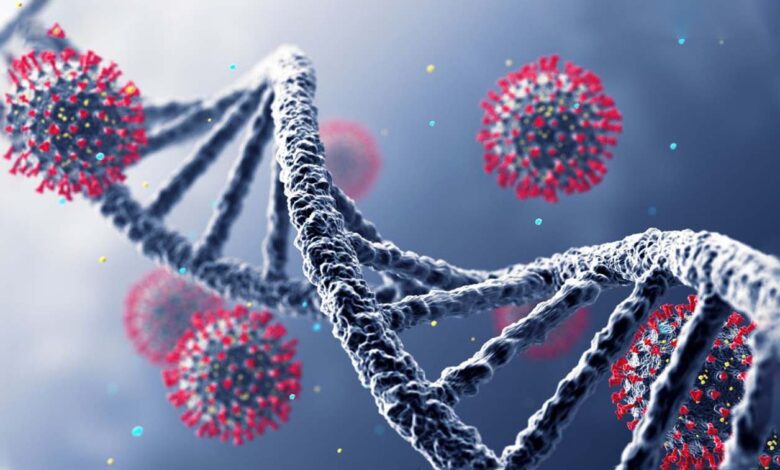
Scientists discovered that giant, ancient viruses left bits of their genetic material, or genomes, in the DNA of single-celled organisms. Amoebidium is the ancestral organism from which both simple and complex life forms, including humans, evolved. These viral remnants may have played a role in helping our ancestors evolve into more complex organisms.
According to ScienceAlert, the new discovery suggests that the role of viruses in our evolution may have been more important than previously thought. They may have added genes to the original cells; Like viral genes in the ancestors of a symbiotic eukaryote called Amebidium. These added genes could help these cells survive better in their environment.
New research by a team led by Alex de Mendoza Soleran evolutionary biologist at Queen Mary University of London.
De Mendoza-Soler says that discovering remnants of viruses “is like finding Trojan horses hidden in the DNA of amoebidium.” He believes that just like Trojan horses, these viral inserts hidden in DNA are potentially harmful. However, Amoebidium has a way of controlling these viral elements by using chemical processes to shut them down and prevent them from doing harm.
Viruses may have played an important role in the evolution of humans
“Here, we show how a single-celled eukaryote closely related to animals undergoes a process of sequential mixing of its genome with its giant viral predators,” the paper’s authors write.
The way viruses work is that they affect cells by hijacking the essentials of cell reproduction. First, the virus attaches to the surface of the host cell and then injects its genetic material (DNA or RNA) into the host cell. The viral genetic material takes over the host cell’s tools and directs it to produce viral components. New virus particles are made from these components. Eventually, the new viruses leave the host cell, often destroying it in the process and infecting other cells.
Normally, the insertion of many foreign genes (from viruses) into the DNA of Amebidium should be lethal to this organism. However, Amoebidium has developed a way to manipulate foreign genes by chemically modifying one of the four basic elements of DNA. This modification, called 5-methylcytosine (5mC), helps turn off foreign genes and prevent damage.

Science Advances
Cytosine is a nucleotide base and is modified by an enzyme called DNA (cytosine-5) methyltransferase 1 or DNMT1, which is present in all multicellular organisms. The researchers were curious about the origin of this enzyme before the evolution of animals, so they isolated an early organism called Amoebidium appalachens.Amoebidium appalachense) were examined. This organism first lived on the exoskeleton of freshwater insects.
The researchers discovered that Amoebidium appalachensis produced the enzyme DNMT1. This enzyme helps them preserve a significant amount of genetic material from ancient giant viruses that no longer exist. Essentially, these organisms have managed to maintain viral DNA in their genomes using DNMT1.
“These findings challenge our understanding of the relationship between viruses and their hosts,” says de Mendoza Soler. While viruses are typically thought of as invaders, his team’s study tells a more complex story, he says.
The researchers suggest that the coping mechanism allows the microbes to not only survive the onslaught of giant virus DNA, but also incorporate it into their lineage for future generations.
The researchers wanted to know if the presence of viral genetic material in amoebidae was a common occurrence. To find out, they compared the DNA of different species of amoebidae that were isolated from each other and found great variation in the viral genetic material among these species. This high diversity shows that the process of integration of viral genes in the DNA of amoebidia continues and is constantly changing.
“Viral insertions may play a role in the evolution of complex organisms by providing new genes,” says De Mendoza Soler.
Because Amoebidium appalachensis is related to animals by common ancestry, discoveries made about it may help us understand similar processes occurring in our own bodies. Essentially, studying this organism can give us insight into how viral genes affect us.
Humans and other mammals also have remnants of ancient viruses in their DNA. These remnants are called endogenous retroviruses. They are thought to be remnants of viruses that infected our ancestors but did not ultimately kill them. Instead, parts of these viruses became integrated into our DNA over time.
At first, scientists believed that ancient viral remnants in our DNA were just inactive remnants of viruses that could not cause harm. However, it is now thought that many of these viral residues may have some benefit, which is why they have been preserved in our DNA over time.









